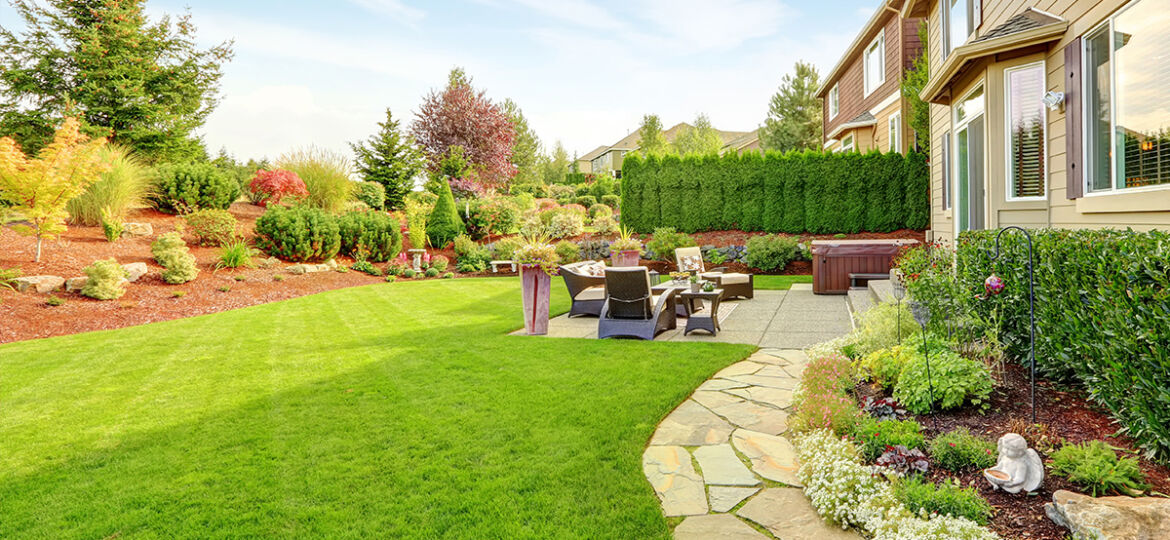Rise by Six: Your Daily Dose of Inspiration
Explore insights and stories that elevate your day.
Landscaping Like a Pro: Clever Tips to Transform Your Yard
Transform your yard with pro landscaping tips! Discover clever tricks to elevate your outdoor space and impress your neighbors.
Essential Tools Every DIY Landscaper Should Have
Embarking on a DIY landscaping project can be both rewarding and challenging. To ensure success, having the right tools is essential. Here’s a list of essential tools every DIY landscaper should have:
- Shovel: Perfect for digging holes, moving soil, and planting.
- Rake: Useful for leveling soil and removing debris.
- Trowel: Ideal for smaller planting tasks and digging in tight spaces.
- Pruning Shears: Necessary for trimming and shaping plants.
- Garden Fork: Great for aerating soil and mixing in compost.
In addition to basic tools, consider investing in a few specialized items to elevate your landscaping game. Hand tools like a garden hoe and cultivator can help you prepare flower beds and loosen soil. For larger projects, a wheelbarrow is invaluable for transporting materials and plants around your yard. Finally, don’t overlook safety gear; gloves and knee pads will keep you comfortable and protected as you create your dream landscape. By equipping yourself with these essential tools, you'll be well on your way to achieving a beautiful outdoor space.

How to Choose the Right Plants for Your Climate
Choosing the right plants for your climate is essential for a thriving garden. Start by understanding your climate zone, as this will determine which plants are most likely to survive and flourish in your area. You can find your climate zone by referencing the USDA Plant Hardiness Zone Map. Once you know your zone, consider factors such as temperature, humidity, and rainfall patterns. Select plants that are native to your region, as they are already adapted to your local environmental conditions and often require less maintenance.
Next, evaluate your garden's microclimates. Different areas of your yard may have varying levels of sunlight, shade, moisture, and wind exposure. For instance, south-facing slopes may experience more sunlight than north-facing areas, influencing your choice of plants. Create a list of potential plants categorized by their sun and water requirements. Here are a few steps to guide your selection:
- Research native plants that thrive in your climate zone.
- Assess your garden's sunlight exposure and watering needs.
- Consider the mature size of the plants to avoid overcrowding.
- Incorporate a mix of perennials and annuals for year-round interest.
Creative Ideas for Small Yard Landscaping
Transforming a small yard into a beautiful outdoor oasis requires some creative ideas for small yard landscaping. Start by utilizing vertical space; consider installing vertical gardens or trellises adorned with climbing plants to create a lush atmosphere without consuming precious ground space. Additionally, introducing multi-level planters can not only maximize planting area but also add dimension and interest to your yard. Incorporating elements like decorative stones, gravel paths, or even a small pond can enhance the appeal of your landscape while still maintaining a compact design.
Another creative idea for small yard landscaping is to embrace the concept of zones. Divide your yard into several distinct areas, such as a cozy reading nook, a herb garden, or a fire pit area. Each zone can have its own unique character while seamlessly flowing into the next. Use ornamental grasses or low-growing shrubs to create natural barriers, providing privacy and a sense of enclosure. Moreover, consider incorporating outdoor furniture that is both stylish and space-saving, such as foldable chairs or built-in benches, to enhance the usability of your small yard.